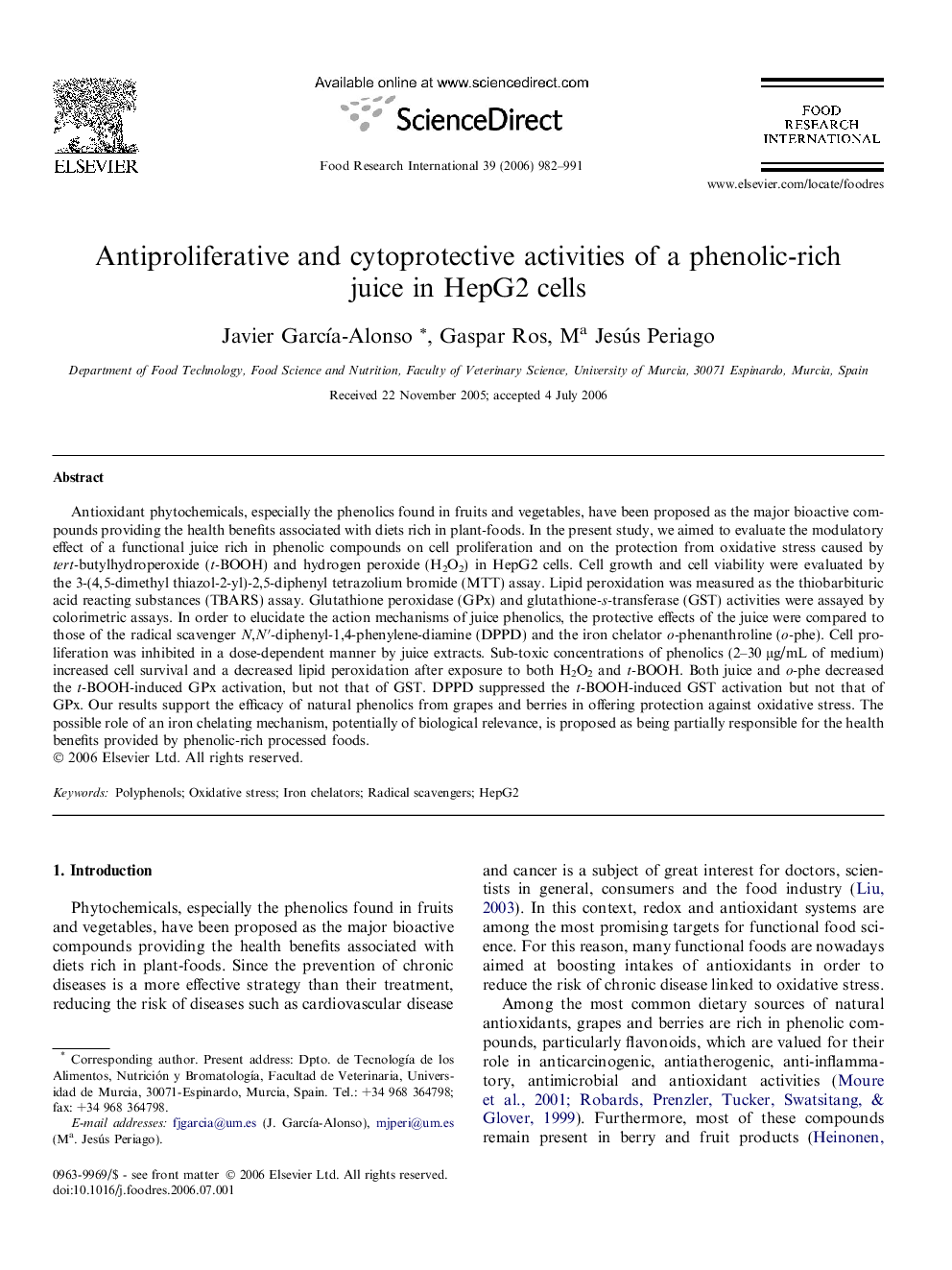| کد مقاله | کد نشریه | سال انتشار | مقاله انگلیسی | نسخه تمام متن |
|---|---|---|---|---|
| 4563096 | 1330746 | 2006 | 10 صفحه PDF | دانلود رایگان |

Antioxidant phytochemicals, especially the phenolics found in fruits and vegetables, have been proposed as the major bioactive compounds providing the health benefits associated with diets rich in plant-foods. In the present study, we aimed to evaluate the modulatory effect of a functional juice rich in phenolic compounds on cell proliferation and on the protection from oxidative stress caused by tert-butylhydroperoxide (t-BOOH) and hydrogen peroxide (H2O2) in HepG2 cells. Cell growth and cell viability were evaluated by the 3-(4,5-dimethyl thiazol-2-yl)-2,5-diphenyl tetrazolium bromide (MTT) assay. Lipid peroxidation was measured as the thiobarbituric acid reacting substances (TBARS) assay. Glutathione peroxidase (GPx) and glutathione-s-transferase (GST) activities were assayed by colorimetric assays. In order to elucidate the action mechanisms of juice phenolics, the protective effects of the juice were compared to those of the radical scavenger N,N′-diphenyl-1,4-phenylene-diamine (DPPD) and the iron chelator o-phenanthroline (o-phe). Cell proliferation was inhibited in a dose-dependent manner by juice extracts. Sub-toxic concentrations of phenolics (2–30 μg/mL of medium) increased cell survival and a decreased lipid peroxidation after exposure to both H2O2 and t-BOOH. Both juice and o-phe decreased the t-BOOH-induced GPx activation, but not that of GST. DPPD suppressed the t-BOOH-induced GST activation but not that of GPx. Our results support the efficacy of natural phenolics from grapes and berries in offering protection against oxidative stress. The possible role of an iron chelating mechanism, potentially of biological relevance, is proposed as being partially responsible for the health benefits provided by phenolic-rich processed foods.
Journal: Food Research International - Volume 39, Issue 9, November 2006, Pages 982–991